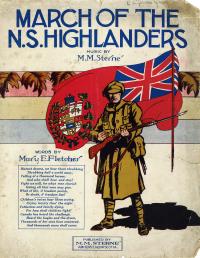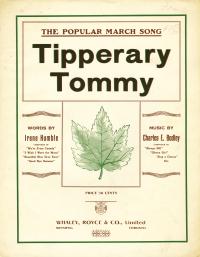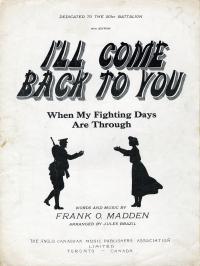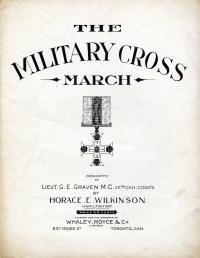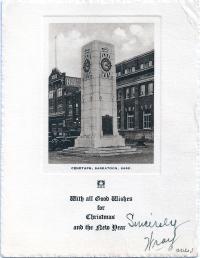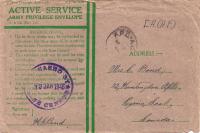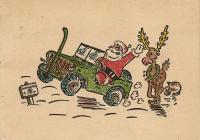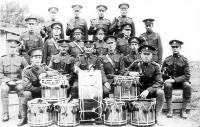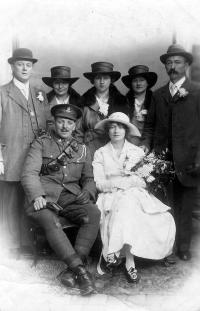Relaxing
March of the Nova Scotia Highlanders
This stirring song used the image of children weeping to bolster support for the war effort.
Tipperary Tommy
Inspired by the British song "It's a Long Way to Tipperary," this song had little Canadian content - except for the maple leaf on the cover.
Song for an infantry battalion
The 201st Battalion (Toronto Light Infantry) had its own tribute song, but music was not enough to encourage recruitment. The unit was disbanded in September 1916 when it failed to reach its authorized strength.
March for a hero
This piece of music was composed and dedicated to Lieutenant G.E. Graven of the 22nd Battalion, Canadian Expeditionary Force.
A cenotaph Christmas card
Saskatoon's war memorial might seem like a strange image to use on a Christmas card, but it represents the importance of the memory of the First World War to Canada in the 1930s.
For more private communications
All letters written by soldiers were normally censored by their own officers, but they could request green Privilege (or Honour) Envelopes. These were not censored by their officers but by postal authorities in the rear areas, and allowed men to write of sensitive personal matters that they might not want their officers to know about.
Santa drives a jeep
On this card sent home by a Canadian soldier serving with the occupation forces in Germany, Santa Claus has exchanged his reindeer for a military-issue jeep.
Views of Shorncliffe camp
A New Brunswick soldier sent this folder home to his family in 1916, to show them what his temporary home, a tented camp in southern England, looked like.
Military bands
During the First World War, most units had brass or pipe bands, which played for the troops or gave concerts for the townspeople near their encampments. These are the bands of the 1st Battalion, 3rd Canadian Convalescent Depot, 23rd (Reserve) Battalion, 37th Battalion, 43rd Battalion, 83rd Battalion, 85th Battalion, 92nd Battalion, 131st Battalion, 161st Battalion, and other units that cannot be identified.
War brides
During the First World War, as many as 35,000 Canadian soldiers married British women. Given the constraints of wartime, their weddings were often modest affairs.

